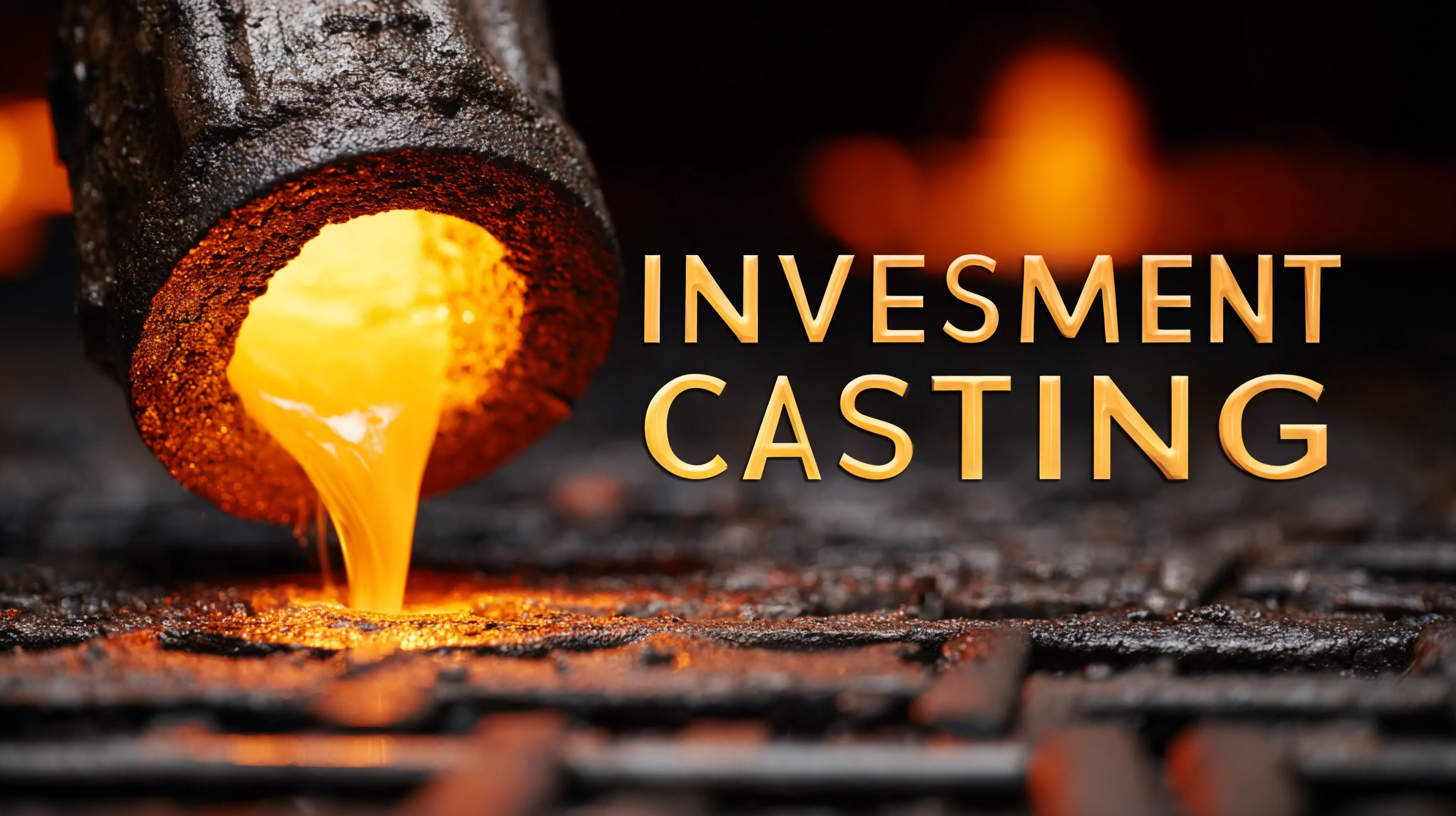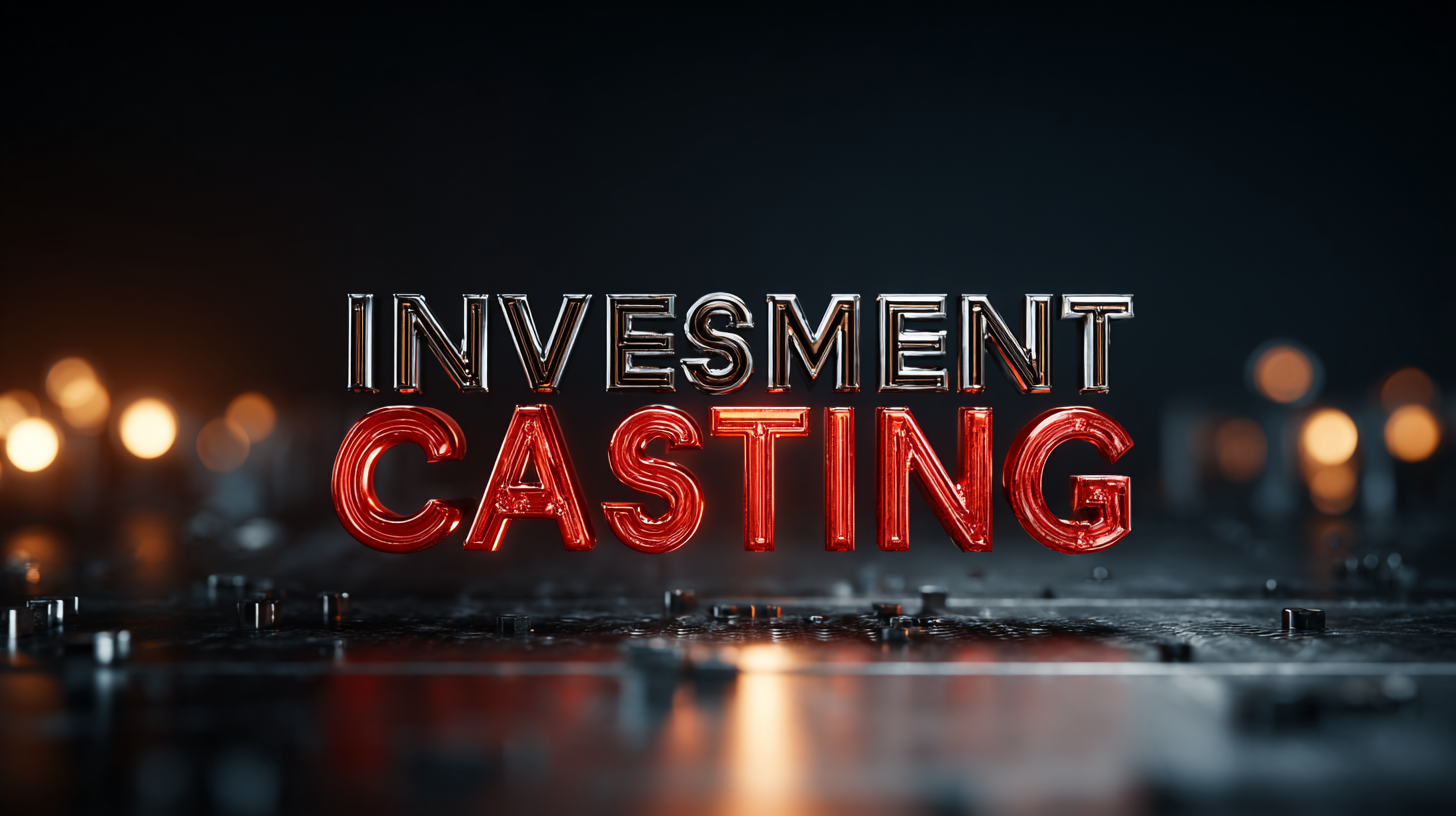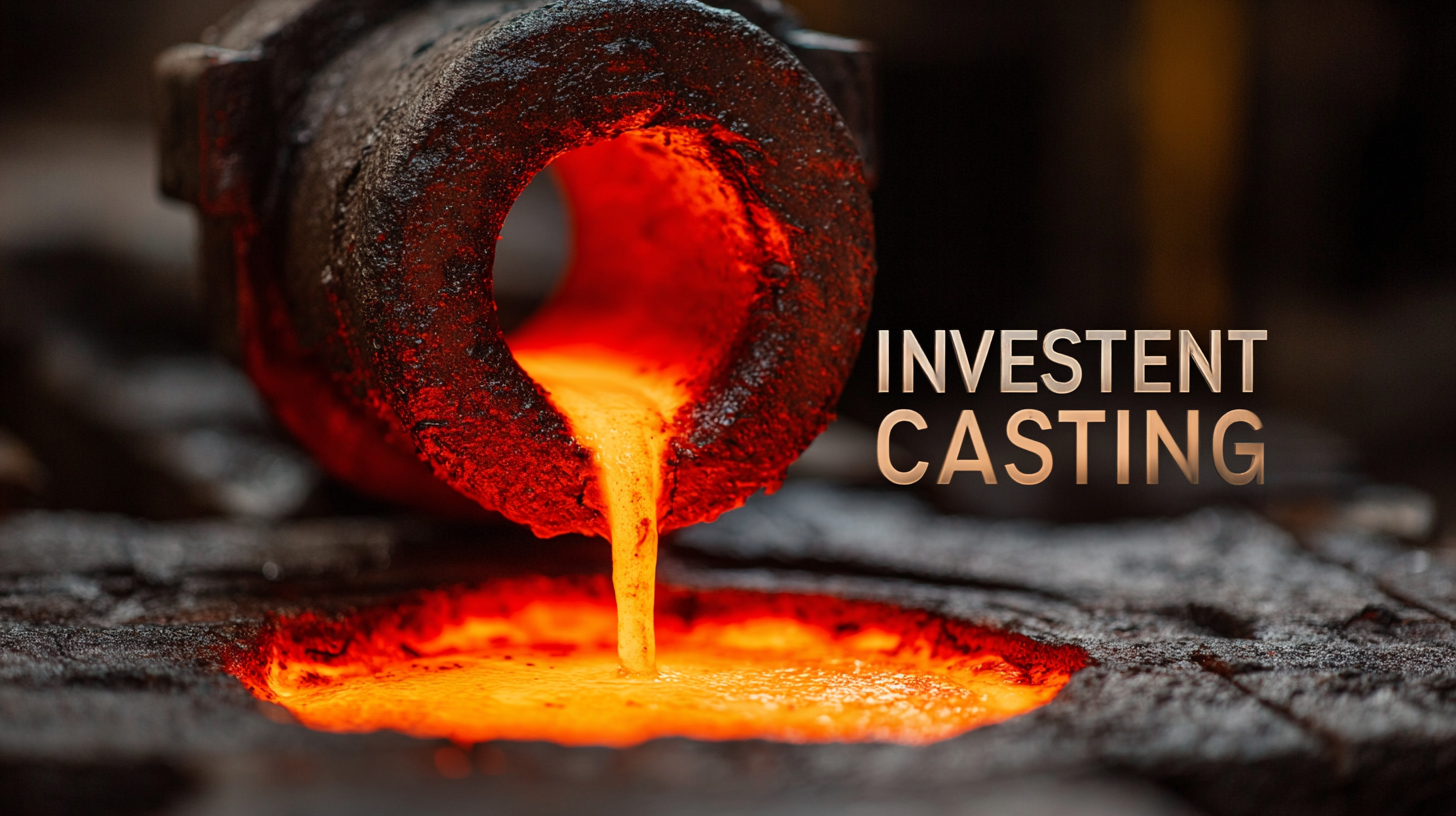In today's rapidly evolving manufacturing landscape, Investment Casting has emerged as a transformative solution for global buyers seeking efficiency, precision, and cost-effectiveness. According to a recent industry report by Grand View Research, the global investment casting market size was valued at USD 18.1 billion in 2020 and is projected to expand at a compound annual growth rate (CAGR) of 5.1% from 2021 to 2028. This remarkable growth is driven by the increasing demand for lightweight components in aerospace, automotive, and healthcare sectors, where accuracy and quality are paramount. As buyers navigate the complexities of sourcing and production, understanding the seven compelling reasons why adopting the best practices in investment casting can significantly enhance their competitive advantage is essential. These insights will not only illuminate the path toward smarter procurement but also underscore the pivotal role of innovation in shaping the future of manufacturing.

The evolution of investment casting has redefined manufacturing standards across various industries. Traditionally, this technique involved labor-intensive processes, but advancements in technology have led to significant innovations. Modern investment casting now utilizes computer-aided design (CAD) and precision manufacturing techniques that enhance accuracy and reduce waste. This evolution not only streamlines production but also allows for the creation of more complex geometries that were previously unattainable, thus expanding the possibilities for designers and engineers.
Furthermore, the incorporation of advanced materials in investment casting has set new benchmarks for performance and durability. With the ability to use high-performance alloys and specialty metals, manufacturers can now produce components that meet rigorous standards of strength and resistance to extreme conditions. This evolution caters to the growing demands from global buyers for lightweight, high-strength products in sectors ranging from aerospace to healthcare. As investment casting techniques continue to advance, they are poised to significantly influence the future landscape of manufacturing, driving innovation and efficiency on a global scale.
Investment casting has emerged as a pivotal manufacturing process that global buyers cannot afford to overlook, especially in terms of cost-effectiveness. By leveraging advanced automation technologies, such as the all-in-one casting systems recently introduced, manufacturers can significantly reduce labor costs and improve production efficiency. This is particularly relevant given the current labor shortages that many industries face.
Investing in automated investment casting solutions not only enhances precision but also minimizes waste, leading to more sustainable production practices. This decrease in production expenses creates a substantial financial incentive for buyers looking to optimize their supply chains. Additionally, the global metal casting market is projected to grow significantly by 2033, emphasizing the rising demand for efficient manufacturing processes like investment casting.
**Tip 1:** When evaluating investment casting options, consider suppliers that integrate automation into their processes to maximize productivity and reduce overall costs.
**Tip 2:** Stay informed about market trends and technological advancements in casting methods to ensure you are making competitive and cost-efficient choices that align with your business needs.
In the rapidly evolving world of manufacturing, quality assurance in investment casting emerges as a pivotal factor in establishing reliability and trust among global buyers. As the industry faces challenges with defect detection and data traceability, innovative solutions like blockchain-integrated IoT devices are beginning to shape the landscape. By leveraging real-time processing capabilities, these advanced technologies facilitate accurate identification of casting defects, ensuring that buyers receive products that meet stringent quality standards.
The integration of blockchain technology provides an additional layer of reliability by creating a transparent and immutable record of each casting process. This transparency not only enhances traceability but also builds confidence among stakeholders regarding the integrity of the products. As buyers increasingly seek assurance that their investments are safeguarded, the commitment to quality through advanced inspection methods becomes not just a requirement, but a competitive advantage in the global market. Thus, the emphasis on quality assurance in investment casting significantly influences purchasing decisions, making it a game changer for global buyers.
| Reason | Description | Impact on Global Buyers | Quality Assurance Measures |
|---|---|---|---|
| Precision Engineering | Investment casting allows for complex geometries and tight tolerances. | Reduces assembly costs and improves product performance. | Rigorous dimensional inspections and CAD modeling. |
| Material Versatility | Supports a wide range of metals and alloys suitable for various applications. | Greater design options for buyers in different sectors. | Material certification and testing for compliance. |
| Cost Efficiency | Lower material waste and reduced labor costs. | Higher margins for manufacturers and lower prices for consumers. | Process optimization and waste management protocols. |
| Enhanced Mechanical Properties | Investment casting often results in superior strength and durability. | Improved lifecycle of products for buyers. | Material testing and mechanical property evaluations. |
| Faster Production Times | Streamlined processes allow for quicker turnaround on orders. | Higher responsiveness to market demands and reduced lead times. | Workflow management techniques and scheduling optimizations. |
| Sustainability | Investment casting is a more sustainable process with lower environmental impact. | Attracts eco-conscious buyers and enhances brand image. | Sustainability assessments and compliance with environmental regulations. |
| Global Reach | Facilitates international trade and market expansion. | Access to new markets and diverse customer bases. | Adherence to international quality standards and certifications. |
The investment casting process is undergoing a transformative shift towards sustainability, aligning with modern environmental demands and industry standards. According to a recent report by Market Research Future, the global investment casting market is projected to reach $14 billion by 2025, driven by the increased focus on eco-friendly manufacturing practices. Companies are now adopting renewable energy sources and reducing waste generation in their operations, significantly lowering their carbon footprints.
Furthermore, the use of advanced materials and innovative technologies has contributed to the efficiency of investment casting. A study conducted by the American Foundry Society indicates that investment casting processes can achieve near-net shapes, minimizing the amount of material waste. Additionally, environmentally friendly coatings and recycling initiatives are being implemented, allowing manufacturers to repurpose metal scraps and by-products effectively. As global buyers become more environmentally conscious, investment casting emerges as a pioneering solution that not only meets their needs but also adheres to strict regulatory standards, enhancing its appeal in a competitive market.

The advent of innovative technologies in investment casting is driving a transformative wave across various industries. According to a report by MarketsandMarkets, the investment casting market is projected to reach USD 24.75 billion by 2025, growing at a CAGR of 6.5%. This surge is fueled by advancements in 3D printing, simulation software, and robotics, which enhance precision and efficiency in the casting process. For example, the integration of 3D printing allows for the creation of complex geometries that were previously unattainable, significantly reducing material waste and production time.

Moreover, the implementation of smart casting technologies, such as IoT-enabled monitoring systems, enhances quality control and reduces operational costs. A study from Research and Markets indicates that smart manufacturing solutions in investment casting can decrease lead times by up to 30% while improving overall product quality. This shift not only enhances competitiveness but also meets the growing demand for customized components across sectors like aerospace, automotive, and medical devices. As global buyers increasingly seek sustainable and cost-effective solutions, the role of innovation in investment casting becomes even more critical, positioning it as a game changer in the manufacturing landscape.




